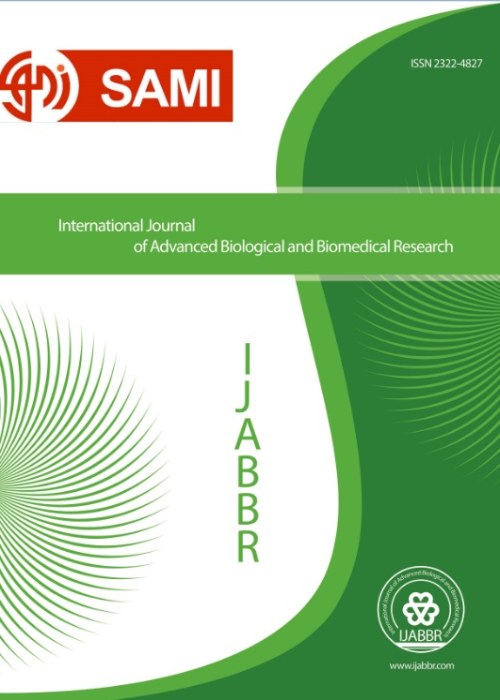The Correlation of Some Secondary Metabolites of Alfalfa (Medicago sativa L.) with Plant Organ and Harvest Time
Author(s):
Article Type:
Research/Original Article (دارای رتبه معتبر)
Abstract:
Background
Alfalfa (Medicago sativa L.) is an important source of phytoestrogens. The abundance of alkaloids, phenols, flavonoids, and isoflavonoids has made this plant a rich source of these plant estrogens. Cultivation of alfalfa as a rich source of phytoestrogens for medicinal purposes has provided opportunities for alternative use of this forage.Methods
The study was carried out as a hydroponic culture in a perlite-cocopeat compacted bed with three replications. Roots and shoots of alfalfa plants were sampled separately in two stages (the 30th and 60th days after sowing). Plant samples were extracted with methanol solvent, and total phenols, flavonoids, and isoflavonoids contents were measured by spectrophotometric colorimetric method.Results
The data analysis showed a significant effect of plant organ and harvest time on the contents of total phenols, flavonoids, and isoflavonoids (P≤0.05). The maximum accumulation of these compounds was in the plant shoots, and with the increase of the harvest time, the content of these phytoestrogens increased. Spearman's correlation analysis showed the different effects of the plant organ on the correlation level of the mentioned metabolites, so the flavonoids of the roots and shoots showed the most positive correlation, while isoflavonoids did not show a significant correlation (P≤0.05).Conclusions
The presence of the maximum contents of total phenols, flavonoids, and isoflavonoids in the shoots of alfalfa can be concluded that the distribution of secondary metabolites in plants, the same as the primary metabolites, is mainly dependent on the plant organ and tissue. Furthermore, the maximum content of these metabolites in the vegetative stage of alfalfa is due to the transition from the vegetative stage to the reproductive stage in these plants. Therefore, the late vegetative stage is the best phenological stage and the most suitable harvest time for medicinal applications.Keywords:
Flavonoid , isoflavonoid , Phenol , phytoestrogens , roots , shoots
Language:
English
Published:
International Journal of Advanced Biological and Biomedical Research, Volume:12 Issue: 1, Winter 2024
Pages:
28 to 43
magiran.com/p2679029
دانلود و مطالعه متن این مقاله با یکی از روشهای زیر امکان پذیر است:
اشتراک شخصی
با عضویت و پرداخت آنلاین حق اشتراک یکساله به مبلغ 1,390,000ريال میتوانید 70 عنوان مطلب دانلود کنید!
اشتراک سازمانی
به کتابخانه دانشگاه یا محل کار خود پیشنهاد کنید تا اشتراک سازمانی این پایگاه را برای دسترسی نامحدود همه کاربران به متن مطالب تهیه نمایند!
توجه!
- حق عضویت دریافتی صرف حمایت از نشریات عضو و نگهداری، تکمیل و توسعه مگیران میشود.
- پرداخت حق اشتراک و دانلود مقالات اجازه بازنشر آن در سایر رسانههای چاپی و دیجیتال را به کاربر نمیدهد.
In order to view content subscription is required
Personal subscription
Subscribe magiran.com for 70 € euros via PayPal and download 70 articles during a year.
Organization subscription
Please contact us to subscribe your university or library for unlimited access!



